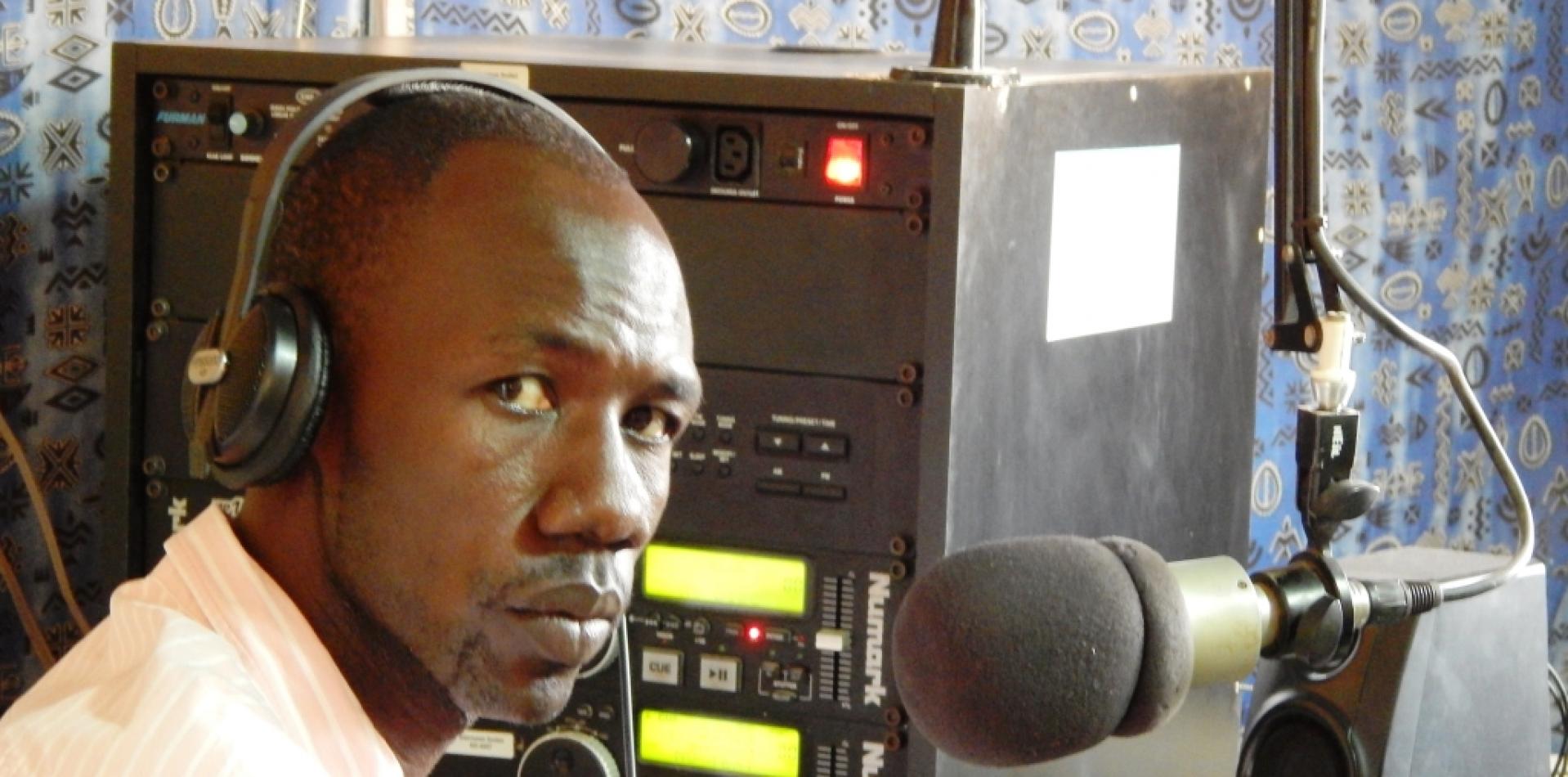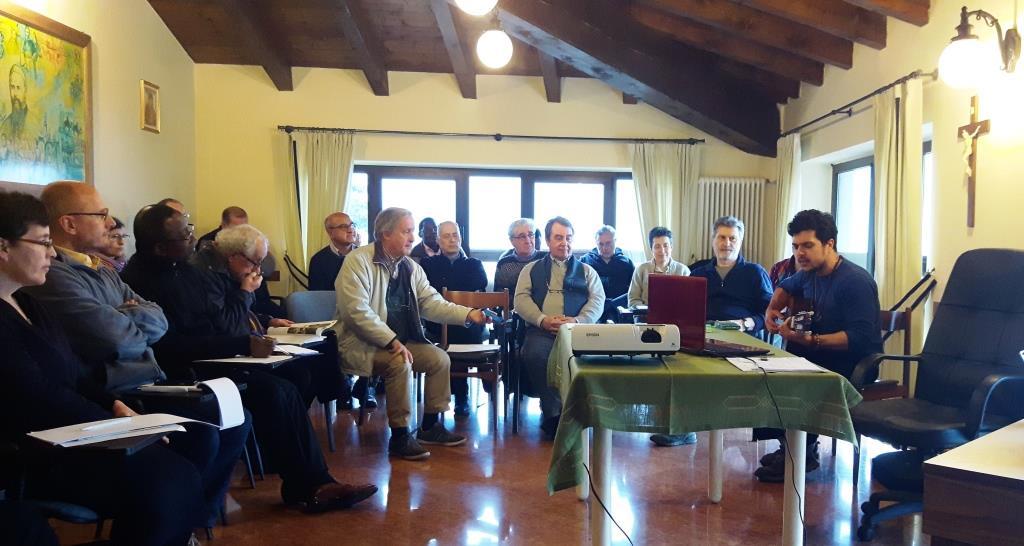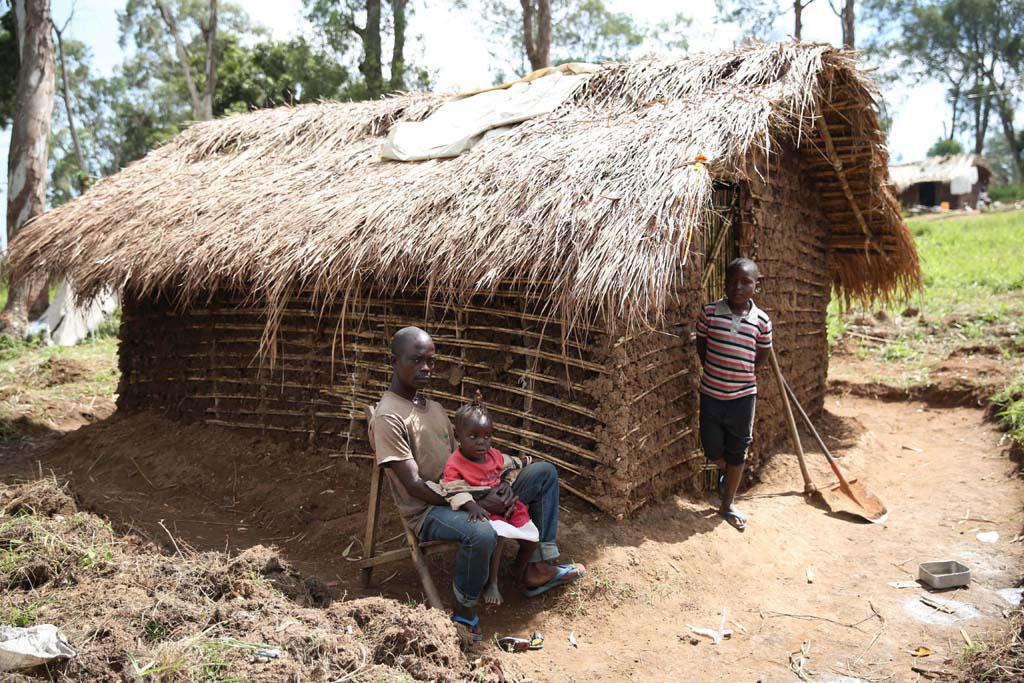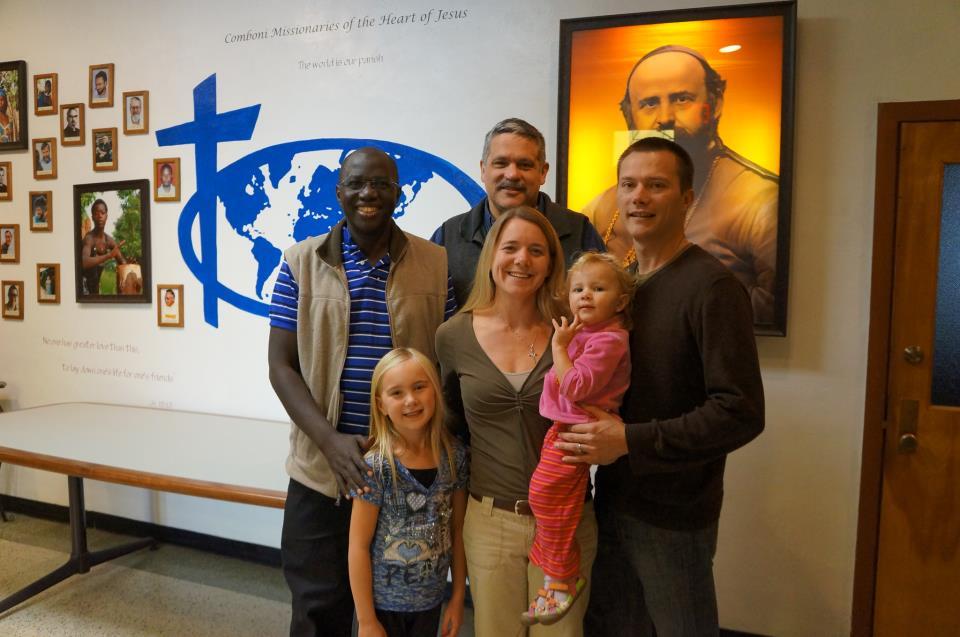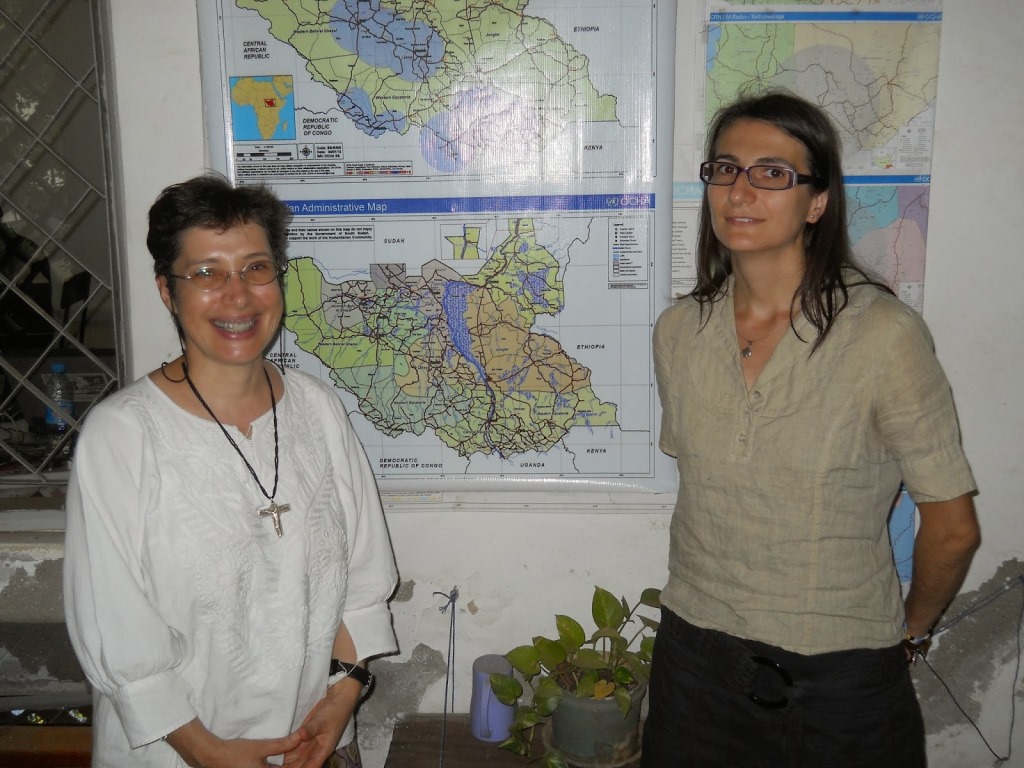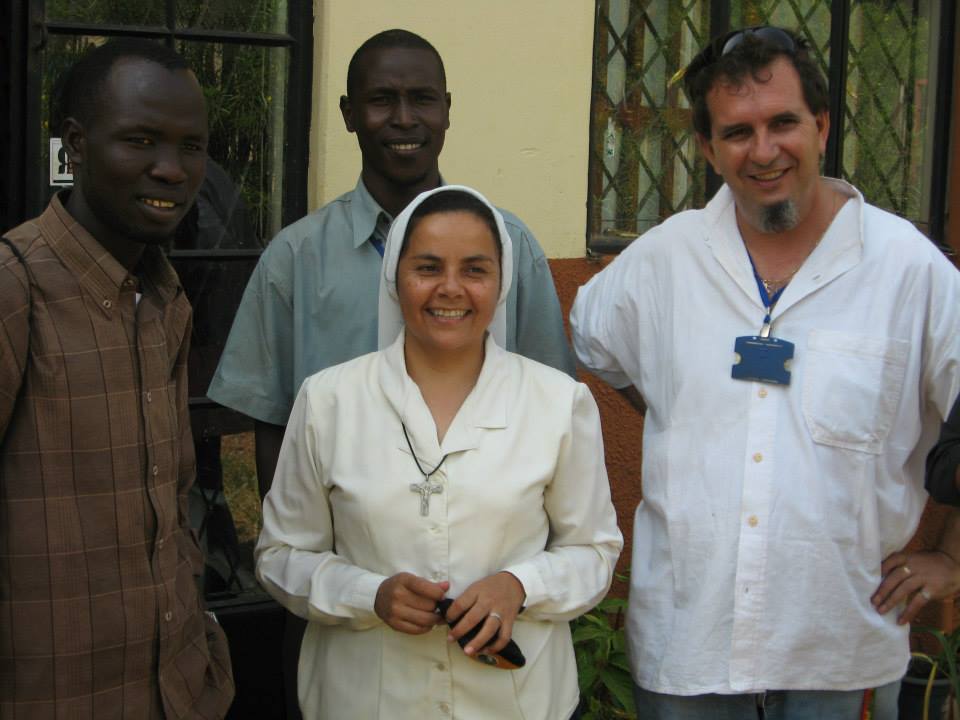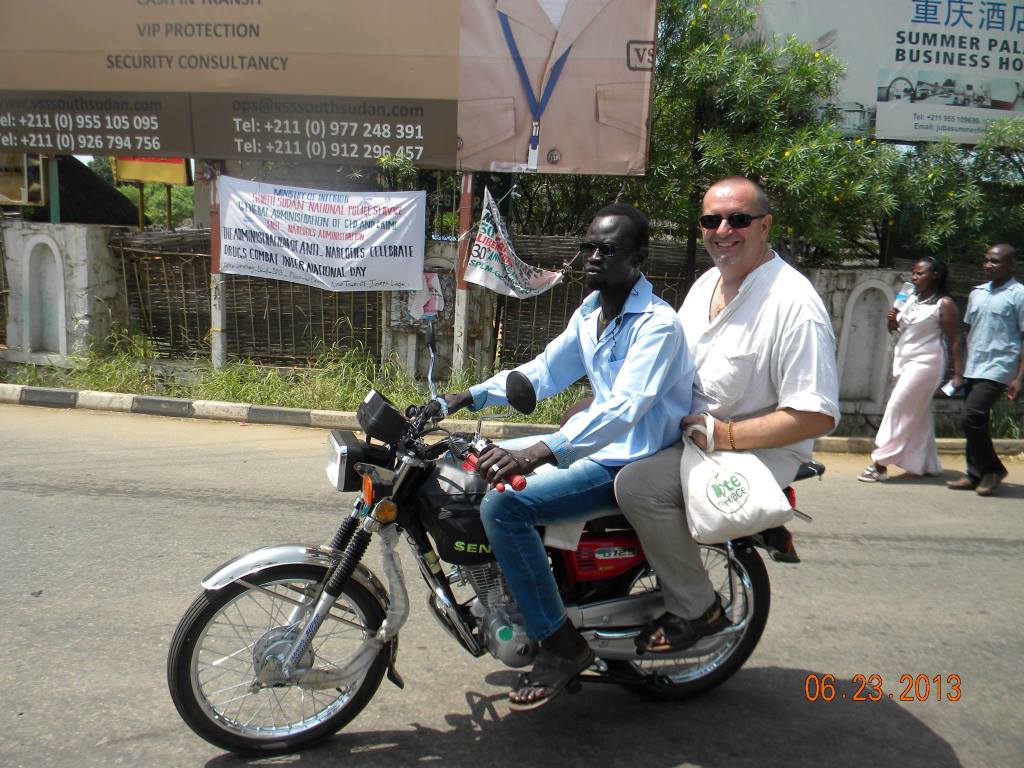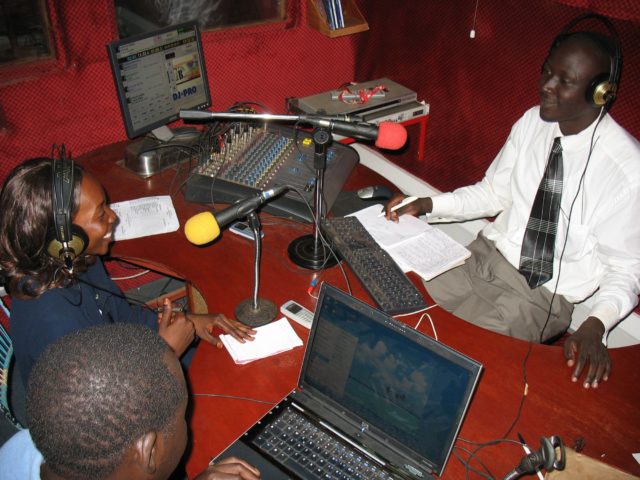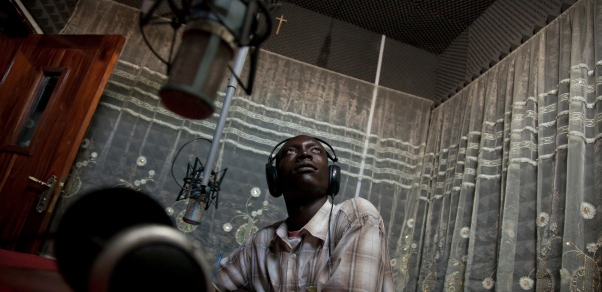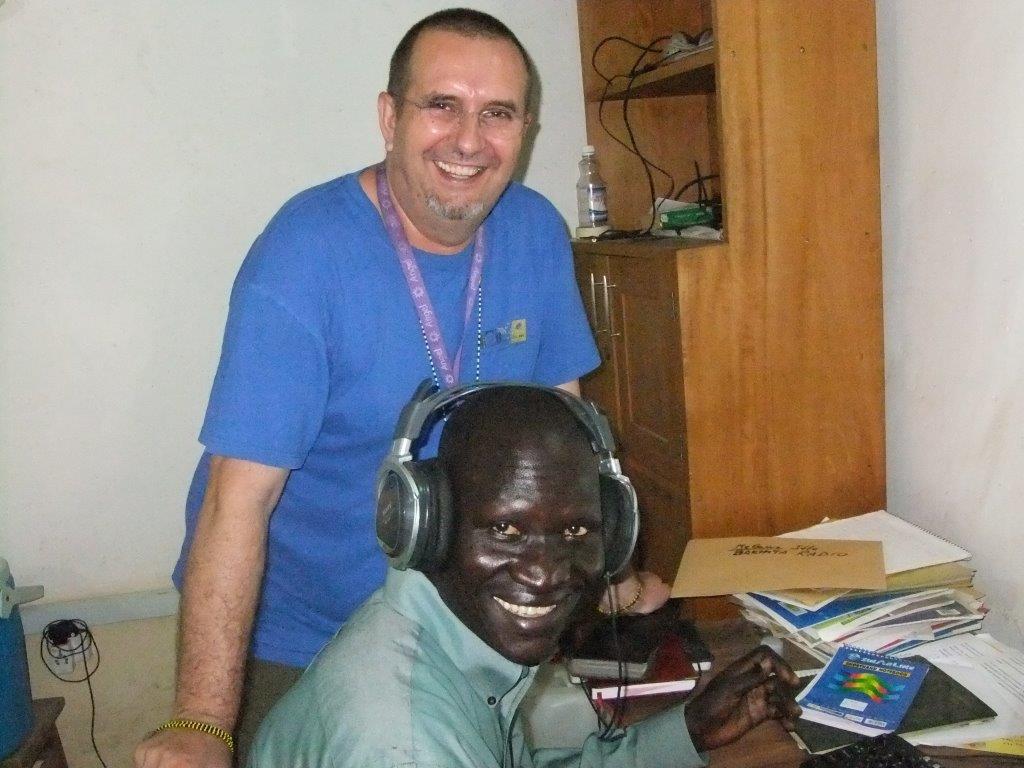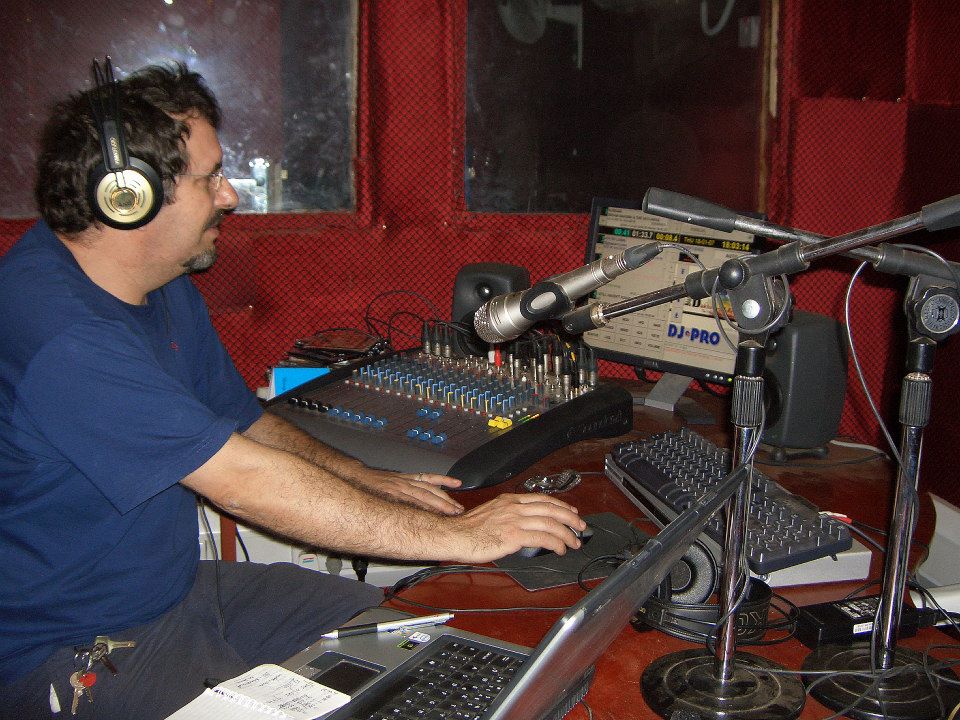Daniel Comboni
Misjonarze Kombonianie
Obszar instytucjonalny
Inne linki
Newsletter
Thursday, November 1, 2018
“The experience of the Catholic Radio Network (CRN) – says Paola Moggi, Comboni sister – suggests that radio can be used to promote peace, especially if programs are aired consistently over a long period of time with adequate involvement of the listening communities. Limited capacity by senior and junior staff, especially to develop and anchor quality peace programs in vernacular languages, is a matter of concern, but would be easily overcome with a more systematic capacity building program.”
The civil war in Sudan has been the longest in Africa. The Comprehensive Peace Agreement (CPA) between the two main antagonists in Southern Sudan, Abyei, Nuba Mountains, and Blue Nile, i.e. the Government of Sudan (GoS) and the Sudan People Liberation Movement/Army (SPLM/A), was signed on January 9 2005. Since then “restoring relationships” in Southern Sudan, torn apart by proxy wars, has not been the main concern of the international partners: security, oil exploitation, and economic development have taken the centre stage.
Besides the high-level IGAD mediation, which brokered the power-sharing agreement between the GoS and SPLM/A, churches have demonstrated special concern in reaching out to the 85% illiterate population of Southern Sudan and involve them in a people-to-people long term transformation of relationships.
Furious violence erupted on December 15 2013 in the 2011-born Republic of South Sudan, when deep distrust among Southern factions precipitated political disagreements into carnage: it is now vital to seriously engage the political leaders and the ordinary people in a long-term process of encounter and reconciliation.
Weaving peace is a multi-layered process, and communication plays a pivotal role in it. In the scenario of post-conflict Sudan this paper explores the efforts of the Catholic Church to promote peace and integrate the society, far beyond the CPA.
The Catholic Radio Network, with its community-based radio stations, was set up to sustain trust-building and reconciliation in post-conflict Sudan. It was initiated in 2006 by the Sudan Catholic Bishops’ Conference (SCBC) and the Comboni Missionary Sisters/MCCJ.
Overview of the context: the two Sudan civil wars
Sudan, until July 9 2011 the largest nation in Africa, had a highly heterogeneous population (Arabs, Nilotic and Bantu…) and a long history of civil war.
In 1990 Abel Alier published an insider’s analysis of the civil war of the Sudan, dating back its roots to the Anglo-Egyptian Administration, when the 1922 Passport and Permits Ordinance imposed restriction on people’s free movement across the South-North borders. The historical justification for the ordinance was based on the need to curb the persistent trade of Southerners as slaves, and the need to contain winds of rebellion in the North from spreading to the South[1].
In 1928 the quest for dignity by the peoples of Southern Sudan was expressed in a conference convened in Equatoria under the auspices of the Church Missionary Society.
At the end of the Second World War many colonies started claiming independence, and the Sudan was among them. The Juba Conference of 1947 offered Southerners the formal opportunity to express their reservation against unity between North and South, but the political decision had already been taken and the creation of “one Sudan” had simply to be ratified[2].
In 1951 only one Southerner sat in the thirteen-member Constitutional Amendment Commission: he bothered to propose a federal system of governance, and was utterly ignored. From 1954 incidents of marginalization had instilled in Southerners fear of a return to slavery[3]. Their desperate quest for dignity erupted violently on August 18 1955 in the Torit mutiny, months ahead of the declaration of independence “one Sudan”.
The second Sudan Civil War started in 1983: a proxy war among Southerners[4], with ferocious militias armed by the Khartoum government fighting the SPLA
From 1983 to 2005 Southern Sudan was slain and fragmented: SPLA-controlled areas were attacked by Khartoum-sponsored militias, and the garrison towns of Juba, Malakal and Wau, still firmly under the control of the Sudan Armed Forces (SAF), endured prolonged siege.
Persistent airstrikes and scattered land mines made life impossible for most civilians.
The outcome of the war in brief: almost two and a half million dead, five million displaced and refugees, 22.000 child soldiers, and deep physical and psychological wounds in the survivors.
Indeed the Sudan Civil war has been the longest civil war in Africa, with three generations of Southerners experiencing no other life than war.
The mediating role of religious institutions
Religious institutions have marked the history of Southern Sudan since the nineteenth century, through Christian missionaries of different denominations[5]. Denouncing and counteracting the slave trade was one of their concerns. Since 1871 the Catholic bishop Daniel Comboni mobilized human and financial resources to defend the dignity of Africans in the Sudan.
In the South primary education and basic health services had been provided mainly by missionaries. By 1948 there was only one government secondary school in Southern Sudan: most primary schools were mission schools, with opportunity of priestly formation for promising students. For lack of learning opportunities in the South, a Catholic priest had to sit in the first Sudanese Parliament: Saturnino Lohure, from Eastern Equatoria, was the most vocal Southern MP. He was later exiled and killed in Uganda by emissaries from Khartoum.
In 1964 the Khartoum government charged all Christian missionaries with fomenting the rebellion, and expelled them summarily from Southern Sudan. The All African Conference of Churches (AACC) and the Catholic Missionaries played a very active role in contacting the leaders of Anyanya and Sothern Sudan Liberation Movement, and consulting many Southern Sudanese sheltered in Uganda and Ethiopia. The Addis Ababa Peace Agreement in 1972 came as the outcome of the mediation efforts of churches and religious institutions[6].
When the second civil war reached the climax of its brutality in 1991-1994, it was again a religious institution, namely the New Sudan Council of Churches (NSCC), to take the lead in reconciling warring factions. Formed in 1989 under Catholic Bishop Paride Taban, the NSCC comprised of six Christian churches active in Southern Sudan: the Roman Catholic Church, the Episcopal Church of the Sudan, the Presbyterian Church of Sudan, the African Inland Church, the Sudan Pentecostal Church, and the Sudan Interior Church.
From 2002 the establishment of the USAID $10 million Sudan Peace Fund for the South brought a significant change to the people-to-people process. What started as the initiative of churches and Southern civil activists became part of a broader political and developmental strategy by external agents: The Pact programme operated to bring peace through development in Southern Sudan, and initially supported NGOs and people-to-people meetings, but turned to direct support of the Government of Southern Sudan (GoSS) from 2005[7].
A six-year ceasefire between GoS and SPLM/A spanned from January 9 2005 to July 9 2011 with no involvement of the people.
The interim period was soon marred by tension: the mysterious death of John Garang on July 30 2005, recurrent clashes within the Joint Integrated Units, battles between SPLA and rebel militias, and lack of tangible peace dividends for most Southern Sudanese. Their initial euphoria for the peace deal turned progressively into frustration, with mounting criticism against the scandalous greed of GoSS leaders and their mismanagement of public resources. Looting by soldiers and generals, sad feature of the war, continued at the expenses of the ordinary people even when the war was over.[8]
Thanks to the mobilization by Christian churches the Sudan Elections managed to take place in a relatively peaceful environment, despite delays and fears, and the Southern Sudan Referendum became a joyous reality thanks to the intensive diplomatic efforts of the churches.
Though excluded from the IGAD mediation, religious institutions continued to play a role in the post-conflict reconstruction, especially for their closeness to the people, who had survived during the war for bush schools, dispensaries, and feeding programs run by churches and missionaries.
While the UN, the International Funding Institutions, and the “troika” were ready to assist the Southern Sudan reconstruction with incentives and coordination mechanisms, their inability to engage adequately in a sustained peacebuilding process was clear from previous experiences[9].
Reconciling warring factions is of utmost importance in peace building, to enable a shared future. [10] It changes the psychological orientation toward “the other”: groups with a prolonged history of grievance and enmity are bound to be locked into cycles of hostility and prejudices. Once members of hostile groups come to acknowledge their shared humanity and see the mutual advantages of a constructive relationship, peace can consolidate[11].
Communicating peace in Sothern Sudan and Nuba Mountains: the Catholic Radio Network
Radio has proven powerful in Africa to spark ethnic violence, but it can also promote peace[12]. The Catholic Radio Network (CRN) started in 2006 as a joint initiative of the Comboni Institutes and the Sudan Catholic Bishops’ Conference (SCBC). It derived from the moral authority gained by the Catholic Church and the missionaries during the devastating times of war.
Origin of the radio project: at the service of life
The NCC People to People movement had tried to end hostilities and heal divisions arisen among peoples of Southern Sudan during the proxy wars. Such ethnic conflicts were allegedly responsible for more war-related civilian deaths than the direct conflict between SPLM/A and GoS. Exorbitant expenses in reaching out to the scattered population and lack of regular communication to sustain the outcome of the peace meetings had caused the people-to-people peace process to falter.
After the signing of the CPA the church was looked at again for guidance in the turmoil of the interim period, and needed a means of communication to promote reconciliation.
In the prevailing oral culture of Southern Sudan, communication through radio would reach the scattered population and engaged it despite lack of roads and electrification. The Comboni Institutes offered personnel and a start-up fund to develop a radio project: it would have been the gift of Daniel Comboni, first Catholic Bishop of Sudan canonized in 2003, to post-conflict Sudan.
Local ownership and local insights
The CRN was spearheaded by the Comboni Institutes and owned by SCBC, which was credited with spiritually and morally supporting the marginalised communities in their struggle for dignity. Moreover, most church leaders were Southern Sudanese: they had direct experience of the effect of the war on relationships, and direct knowledge of the political context, of its dynamics, and of traditional mechanisms for security and peace. Parishes and chapels were active also in remote areas, and would sustain hope in the post-war order even there.
Though NSCC had become marginal to the IGAD-brokered peace process, the Catholic, Anglican and Presbyterian Churches were still in high esteem and were even considered the only local institutions able to challenge GoSS on matters of accountability.
A feasibility study was conducted from July 2005 to March 2006 by the Combonis to shape the structure of the radio project from real-life situations. Missionaries had been active in remote areas of Greater Upper Nile, Bahr al Gazal, and Equatoria, and contributed to the field research: the situation of SPLA-controlled and Government-controlled areas differed strikingly, with total lack of infrastructure in isolated areas. Juba, the capital city of Southern Sudan, enjoyed a rapid reconstruction, while progress was minimal in other towns. While UNMIS had set up Radio Miraya, broadcasting Juba-produced radio programs in Arabic and English through relays, the Combonis proposed a network of community-based radio stations in each Catholic diocese: the decentralised structure would grant “unity in diversity” and enable each station to produce in loco culturally sensitive programs also in vernacular languages. Each Local Ordinary would take responsibility for the local radio station, providing personnel and any available structure, while the Comboni Institutes, under the auspices of the SCBC, would take responsibility for the coordination and administration of the whole network in its initial phase, with emphasis on staff training and production of common programs.
While UNMIS was definitely endowed with funds to start Radio Miraya immediately, the Comboni Institutes, with their limited resources, developed the radio network progressively from 2006 to 2011, with contributions from a wide range of partners: Catholic organizations, non-confessional institutions, and even Christian churches of other denominations. The enormous joint venture put high demands on the central CRN office, acting also as a back-up system for individual stations, but enabled each station to partake in the project from its beginning, while each diocese would progressively take responsibility for it, at the most appropriate pace for its unique situation within war destruction.
Identity and aim
The policies of the network were developed progressively from June 2006, through consultation with the appointed diocesan representatives called by then “Diocesan Radio Coordinators”. Broadcasting licenses were requested by the President of SCBC in 2006, but were granted only by the GoSS and the Autonomous State of Southern Kordofan. In January 2008 the Board of Governors (BOG) of CRN, appointed by the SCBC Plenary from April 2006, approved the first registration of CRN as a Sudanese NGO with a remarkable peace-oriented identity:
Vision: A reconciled society, built on human and spiritual values, rooted in justice and honesty.
Mission: To reach-out to the people of South Sudan and Nuba Mountains with a means of communication and information that builds peace through reconciliation and healing of trauma. To contribute to the spiritual welfare of the people through good information and civic education, which foster integral human development and respect for human rights, paying special attention to vulnerable groups.
Objectives:
i. To reach out to the people of Southern Sudan and the Nuba Mountains through a means of communication of the Church that builds peace through reconciliation and healing, promotes spiritual growth and human development and offers good information and civic education.
ii. To be operative through local FM stations set up in all dioceses of Southern Sudan and in Nuba Mountains, based in: Juba, Malakal, Rumbek, Torit, Yei, Yambio Wau, and Gidel (Nuba Mountains.
iii. To foster peace in Southern Sudan and the Nuba Mountains, through timely and reliable news, and through radio programs promoting peaceful coexistence of the different ethnic groups.
Inclusive methodology
A participatory methodology was adopted from the inception of the project, especially for planning and evaluation. Inclusiveness would favour responsibility and collaboration among the Comboni Radio Team and the local staff, and promote ownership of the project by the local church.
From February 2008 regular Coordination Meetings were held to have Diocesan Radio Coordinators address together challenges and opportunities, and acquaint themselves with technical and managerial aspects of radio broadcasting.
From 2008 to 2013 meetings were held twice a year, and their minutes would feed the CRN Director’s reports to the BOG. While the meetings were mainly sponsored by the Italian Episcopal Conference, a consistent local contribution was always envisioned to increase local ownership.
Besides the Coordination Meetings, the residential sessions of training contributed to increase mutual understanding and collaboration among the staff of different radio stations, mainly young secondary school leavers with a history of community engagement. The staff was identified and commissioned by each individual diocese, in compliance with agreed-upon criteria.
The pilot training started with one week of self-awareness, to help participants from different parts of Southern Sudan and the Nuba Mountains come to terms with their psychological wounds and with their ethnic prejudices. Unfortunately this module could not continue beyond 2008, for lack of competent local input.
Peace radio
When the radio project took off, communication was not considered an important element of peacebuilding and radio itself was still unchartered ground to many: it was hard to get support. Surveys by CRN (2005-6/2009) and BBC WST (2010/2011) had revealed high demand for local news; partners would fund civic education, especially in view of elections and referendum. Thus news and civic education programs were prioritised.
A timid attempt to produce and broadcast peacebuilding programs came only in March-April 2010, with support from the USA-based Catholic Relief Service (CRS). “Bit the drum of peace” featured short peace messages of 2-4 minutes; they were elaborated by CRS peace consultants and produced as radio jingles in English, Arabic, and 10 different local languages across the CRN stations in Juba, Torit, Malakal, Yei, Rumbek, Tonj, and Gidel. The catchy music made the messages easy to remember, even for children. The principle of “unity in diversity” in content/format (the same for all stations) and languages (diverse in the different locations) contributed to the success of the campaign.
The second round of programs for peacebuilding was elaborated by CRS and Solidarity with South Sudan (SSS) in partnership with CRN from September 2010 to January 2011. The peace campaign was in view of the Southern Sudan Referendum 2011 and envisioned community prayers, peace rallies, and weekly radio programs in local languages. The 15-minutes pre-recorded programs and the 2-hour live programs revolved around 14 chosen topics, in common across all stations. The actual broadcasting instead mirrored local needs and languages, and individual stations could publicise even very local events. It was indeed a success for an estimated audience of about 4 million people.
A more contextualised program to promote peaceful coexistence among rival ethnic groups was elaborated in Eastern Equatoria from October 2012 to March 2013 with CRS and UNICEF. It was entrusted to Radio Emmanuel, the CRN radio of the Catholic Diocese of Torit. Synergy between peace meetings and peace radio was explored, local narratives of peaceful coexistence before the war were gathered from elders, and traditional peace songs widely disseminated. The programs were in three local languages: Otuho, Didinga and Toposa.
People were eager to listen to programs they could understand and willing to air their views in mother tongue; their active participation was staggering.
Radio broadcasting costs were limited in comparison to mobility by road, thus more sustainable in the long term.
Conclusion
The experience of CRN suggests that radio can be used to promote peace, especially if programs are aired consistently over a long period of time with adequate involvement of the listening communities. Limited capacity by senior and junior staff, especially to develop and anchor quality peace programs in vernacular languages, is a matter of concern, but would be easily overcome with a more systematic capacity building program.
By September 2013 CRN had become the second national broadcaster in South Sudan, and the most popular in rural areas.[13] It could reach a potential audience of six million people using 18 different languages: an incredible outreach to sustain people-to-people dialogues with consistent peace broadcasts over weeks, months, and years.
“Unity in diversity” enables relevant local programs within a shared network-journey towards peace. Those who wish a peaceful South Sudan should develop contacts and synergies with CRN and its stations. The South Sudan National Committee for Healing, Peace and Reconciliation could possibly be among them.
Sr. Paola Moggi
Comboni sister
[1] Alier, A, Too many Agreements Dishonoured: Southern Sudan, Oxford, Itach Press, Oxford, (2nd reprint), 2003.
[2] Ibidem, pp. 33-38.
[3] Oduho, J. & Deng, W., The Problem of the Southern Sudan, London, Oxford University Press, 1963, pp. 24-31.
[4] Johnson, D. H., The Root Causes of Sudan's Civil Wars, Oxford, James Currey, 2003, pp. 127-129.
[5] Wheeler, A. C., Day of Devastation, Day of Contentment, Nairobi, Paulines, 2000.
[6] Alier, A, Too many Agreements Dishonoured: Southern Sudan, Oxford, Itach Press, Oxford, second reprint 2003, pp. 91-95.
[7] Ibidem, p. 27.
[8] Personal witness by the author from 2006 to 2013.
[9] Woodward, S.: Peace Operations: The Civil Dimension Accounting for UNDP and the UN Specialized Agencies. In Government of Denmark’s meeting on Strengthening the UN’s Capacity on Civilian Crisis Management, 8-9 June 2004 Copenhagen. Center on International Cooperation, New York University.
[10] Ramsbotham, O., Woodhouse, T., Miall, H., Contemporary Conflict Resolution, Cambridge, Polity Press, 2008, (2nd edition), p.231.
[11] Galtung, J., “Cultural Violence”, Journal of Peace Research, vol.27, n.3, 1990, pp. 291-305.
[12] Arsenault, A., Himelfarb, S., Abbott, S., Evaluating Media Interventions in Conflict Countries, Washington D.C., USIP, 2011, pp.10-13.
[13] Internews/USAID. September 2013. South Sudan National Audience Survey. Juba, Forcier Consulting. Available from https://internews.org/sites/default/files/resources/InternewsSouthSudanAudienceSurvey_web2013-10-31.pdf [Accessed November 2013]

